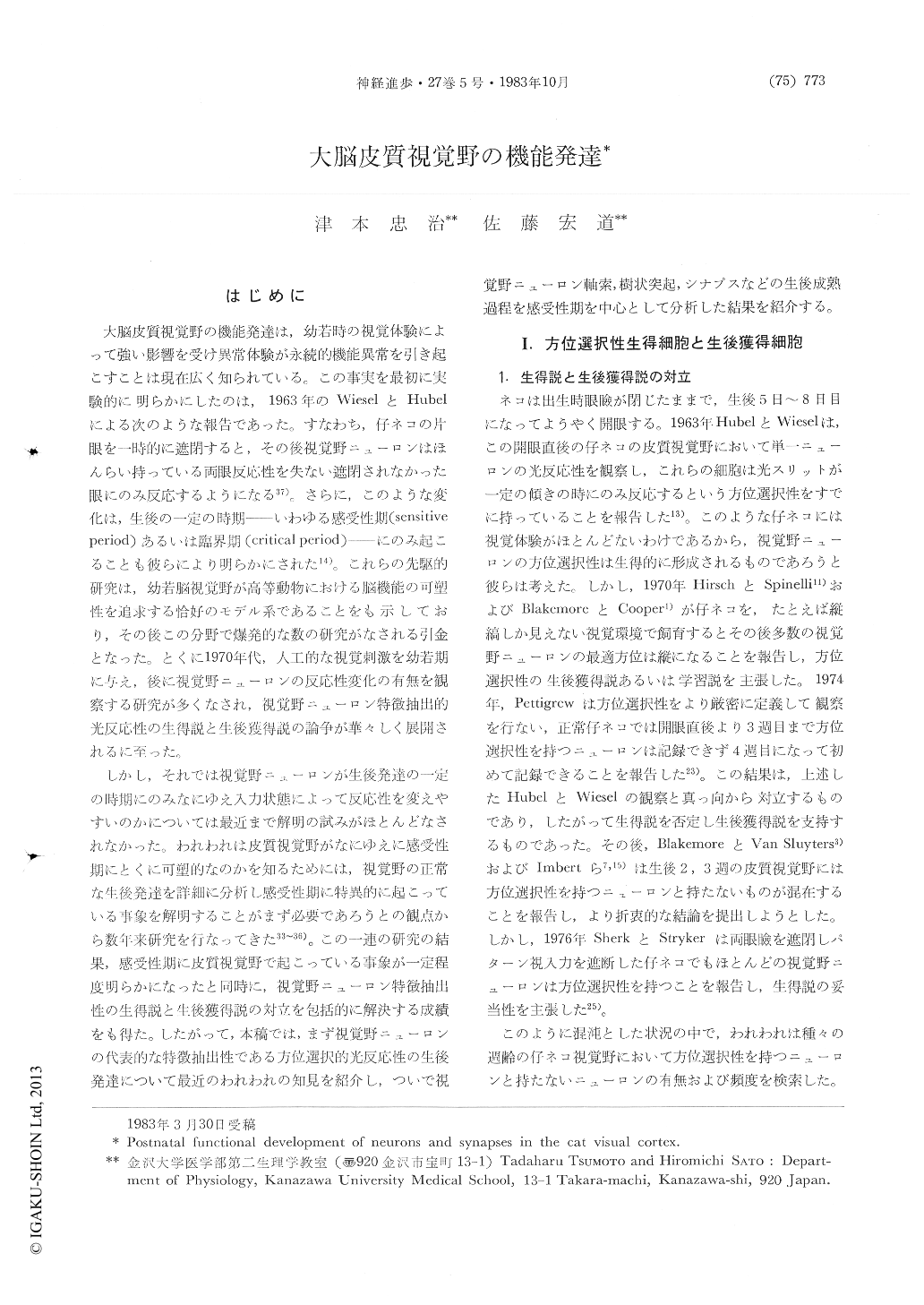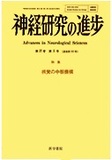Japanese
English
- 有料閲覧
- Abstract 文献概要
- 1ページ目 Look Inside
はじめに
大脳皮質視覚野の機能発達は,幼若時の視覚体験によって強い影響を受け異常体験が永続的機能異常を引き起こすことは現在広く知られている。この事実を最初に実験的に明らかにしたのは,1963年のWieselとHubelによる次のような報告であった。すなわち,仔ネコの片眼を一時的に遮閉すると,その後視覚野ニューロンはほんらい持っている両限反応性を失ない遮閉されなかった眼にのみ反応するようになる37)。さらに,このような変化は,生後の一定の時期―いわゆる感受性期(sensitive period)あるいは臨界期(critical period)―にのみ起こることも彼らにより明らかにされた14)。これらの先駆的研究は,幼若脳視覚野が高等動物における脳機能の可塑性を追求する恰好のモデル系であることをも示しており,その後この分野で爆発的な数の研究がなされる引金となった。とくに1970年代,人工的な視覚刺激を幼若期に与え,後に視覚野ニューロンの反応性変化の有無を観察する研究が多くなされ,視覚野ニューロン特徴抽出的光反応性の生得説と生後獲得説の論争が華々しく展開されるに至った。
しかし,それでは視覚野ニューロンが生後発達の一定の時期にのみなにゆえ入力状態によって反応性を変えやすいのかについては最近まで解明の試みがほとんどなされなかった。
In the primary visual cortex of cats ranging in age from the 2nd week to adult, differences in rates of postnatal functional maturation among types of cells were studied by observing their responses to visual and afferent electrical stimulation. During the 2nd-3rd weeks postnatally, nearly half of layer V cells had orientation-selective visual responses, but such cells were rare in other layers. The proportion of the selective cells matured successively in the order of layers V→IVab, VIu and IVc→II+III and VI l.

Copyright © 1983, Igaku-Shoin Ltd. All rights reserved.


